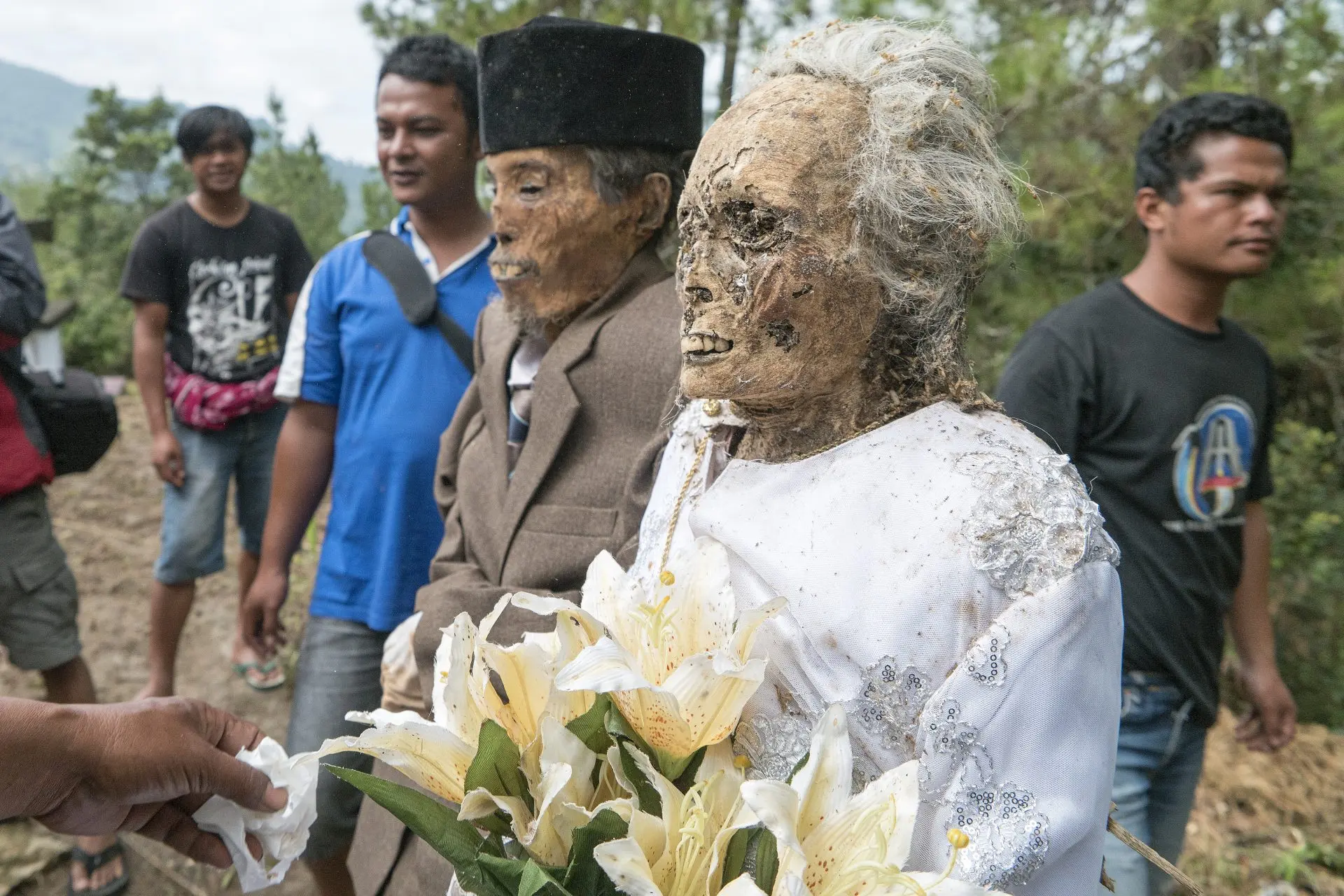In the Tana Torajan Tribal culture on the island of Sulawesi in Indonesia, death is not the end for some, but part of a journey that is shared with direct family members.
When a person dies, relatives mourn the passing by treating the body as a living entity. They believe that by keeping the deceased in their homes, they are not really dead, but are instead considered “sick”, and should be cared for as such.
Depending on social status, the body is cleaned, clothed and fed over the course of weeks, months or even years. The Torajan funeral called ‘Rambu Solo’ is an extremely expensive event and families can spend tens of thousands, keeping the body at home until they can save enough to properly conduct the funeral rites.
While this practice may seem strange or disturbing to many cultures, the Torajan have no fear of the dead, and their love for the person outweighs any concerns or feelings of discomfort about seeing death and decomposition.
Meals, activities, prayers, and all other aspects of daily home life are spent with the deceased person’s body. Once a funeral date has been decided, the family will purchase a water buffalo to use as a sacrifice. They believe that buffaloes are the ‘vehicle’ in which the dead rides to the afterlife at Puya, the land of the spirits.
The funeral is not the end of the relationship. Every three years the ritual of Ma’nene (which translates to ‘care of ancestors’ or ‘the cleaning of the corpse’) is performed and is known as a ‘second funeral’. Whilst not all Torajan people agree or partake in the custom, it is common practice to raise the dead in remembrance.
The nearly millennium-long tradition consists of a three-day long ceremony (usually performed in late August) and is held in the Lembang Paton Village about 29 kilometers from Rantepao. For three days leading to the exhumation of the bodies, a prayer service lead only by the Ne’ Tomina (tribal leaders) is performed while the families await their loved ones.
Following the prayers, the family of the deceased takes the corpse out of its resting place to clean it, change the clothing, clean the crypt and interact with the person, giving it food, drink and sometimes non-essential items such as sweets and cigarettes. Treating the body as a living breathing member of the family helps family members recall memories of their loved one. Additionally, young children who may not remember the family member are reintroduced to their ancestors.
During the Ma’nene ceremony, which combines both indigenous and Christian ideals, the entire village’s dead are exhumed and celebrated. The Torajan believe that death is merely another step in a person’s spiritual life and the traditions of death are taken very seriously usually sparing no expense.
During the elaborate ceremony, the village men gather to sing and dance for the entertainment (and possibly for distraction due to the often uncomfortable and emotional nature of the event) of the family. It is not an uncommon site and often tourists are invited to watch the ceremony in action, and even take pictures with the corpse (with family members permission), though only the family members are allowed to dress the body.
The Ma’nene ceremony is typically held once every three years and a body (which is treated with formaldehyde to preserve it) can be exhumed for up to 100 years or more.
Written by Julie St Jean
Header Image – Ma’nene Ceremony – Image Credit : Shutterstock





